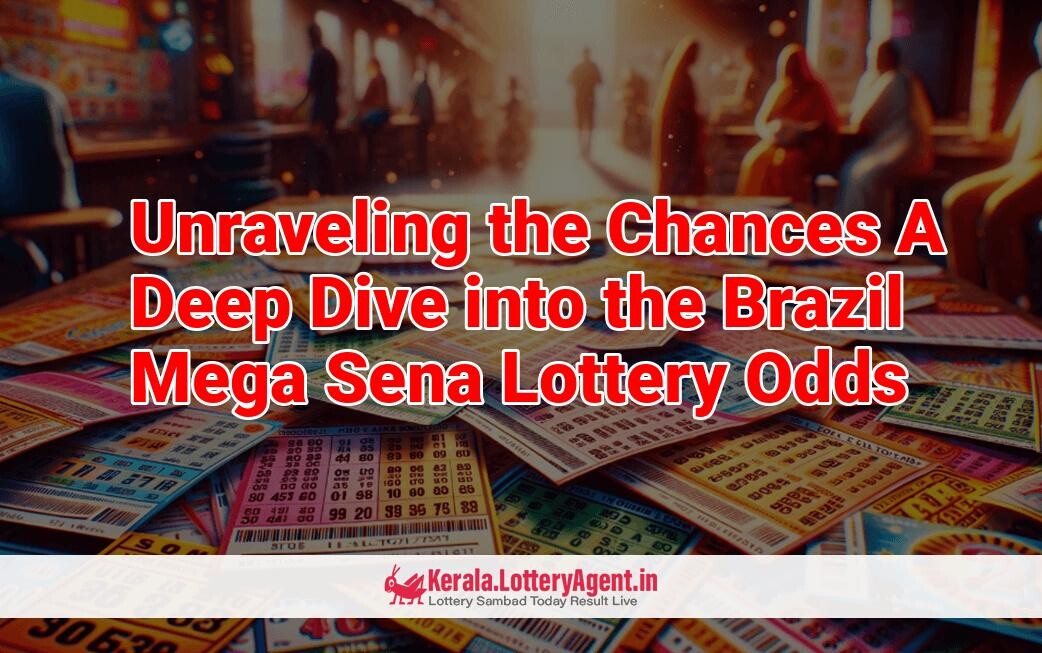
The Brazil Mega Sena lottery captivates not only its local enthusiasts but also garners international attention as a beloved game of chance. Its widespread acclaim across South America and beyond can largely be attributed to the game’s straightforward rules and the potential for immense jackpot rewards.
Delving into the statistical heart of the Brazil Mega Sena, we uncover that this lottery employs a 6/60 matrix. This means players select six numbers from a pool of 60, with a single drum used in the drawing process. The Mega Sena breaks down its prizes into three tiers, offering a simplified yet lucrative opportunity for lottery greenhorns and seasoned gamblers alike. General chances of securing any prize stand at 1 in 2,298. The appeal is further heightened by the minimum prize, positioned at a drool-worthy 120 times the cost of the ticket entry.
The big question on every player’s mind is, of course, the likelihood of hitting the jackpot. The odds of clinching the top prize in Mega Sena are approximately 1 in 50,063,860. While these odds are more favorable than those of the American Powerball, they don’t compare as favorably to other national lotteries such as Colombia’s Baloto.
Understanding the odds is crucial for players to evaluate their engagement in the lottery. For those charmed by the game’s structure and the significant value of its prizes, here’s a pro tip: knowledge of the odds can be a powerful tool. Enter the world of number wheeling, a mathematically grounded strategy that can potentially enhance your chances of winning at the lottery. This system and other math-based approaches can be applied to Brazil Mega Sena to optimize your play strategy.
One might wonder if joining forces with others could tip the scales. Buying a single ticket places your odds at 1 in 50,063,860 for the jackpot. However, imagine pooling resources with fellow players to purchase 100 tickets. Your collective odds would then be improved to 1 in 500,638. Hence, participating in a Mega Sena syndicate could prove a strategic move.
Another point to consider is the efficacy of the Quick Pick option, where numbers are randomly chosen for the player. Although such randomized selections mirror the same odds as personally chosen numbers, they carry no advantage or disadvantage. Around 70% of all lottery tickets in a given draw are statistically picked at random.
The mechanics of the Mega Sena draw are as follows: among the 60 balls in the drum, six are drawn during the lottery. To win the lowest prize, hopefuls must correctly guess a minimum of four numbers. To capture the jackpot, all six numbers must align with the draw.
The starting jackpot for Mega Sena is set at a handsome R$3 million, but the prize pool can skyrocket if the grand prize goes unclaimed, with 33% of the fund rolling over to the subsequent draw. The record-breaking jackpot has soared to more than R$350 million in the past—and to lay claim to it, you must overcome the staggering 1 in 50,063,860 odds.
Those who match five out of six numbers can anticipate a handsome return, typically about €12.5K, with chances of 1 in 154,818. The prospects for this second level are significantly more achievable than winning the jackpot outright.
At the base of the prize ladder sits the minimum win scenario, requiring players to match four numbers. This tier offers a prize of €180 and comes with 1 in 2,332 odds. While it may be the smallest payout, its accessibility makes it an enticing goal for many participants.
The Brazil Mega Sena continues to dazzle lottery players with its blend of simplicity and big wins, proving that a mixture of luck and strategic play can indeed lead to life-altering fortune.











